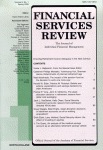Baby Boom, Population Aging, and Capital Markets
DOI:
https://doi.org/10.1016/1057-0810(95)90023-3Abstract
This article tests how demographic changes affect capital markets. The life-cycle investment hypothesis states that at an early stage an investor allocates more wealth in housing and then switches to financial assets at a later stage. Consequently, the stock market should rise but the housing market should decline with the average age, a prediction supported in the post-1945 period. The second hypothesis that an investor’s risk aversion increases with age is tested by estimating the resulting Euler equation and supported in the post 1945 period. A rise in average age is found to predict a rise in risk premiums. Journal ofBusiness, 1994,67(2): 165-202. (Reprinted with permission of the Journaf of Business.)
Published
How to Cite
Issue
Section
License
Copyright (c) 1995 JAI Press Inc.

This work is licensed under a Creative Commons Attribution-NonCommercial 4.0 International License.
Author(s) retain copyright and grant the Journal right of first publication with the work simultaneously licensed under a Creative Commons Attribution-NonCommercial 4.0 International License that allows to share the work with an acknowledgment of the work's authorship and initial publication in this Journal.
This license allows the author to remix, tweak, and build upon the original work non-commercially. The new work(s) must be non-commercial and acknowledge the original work.


